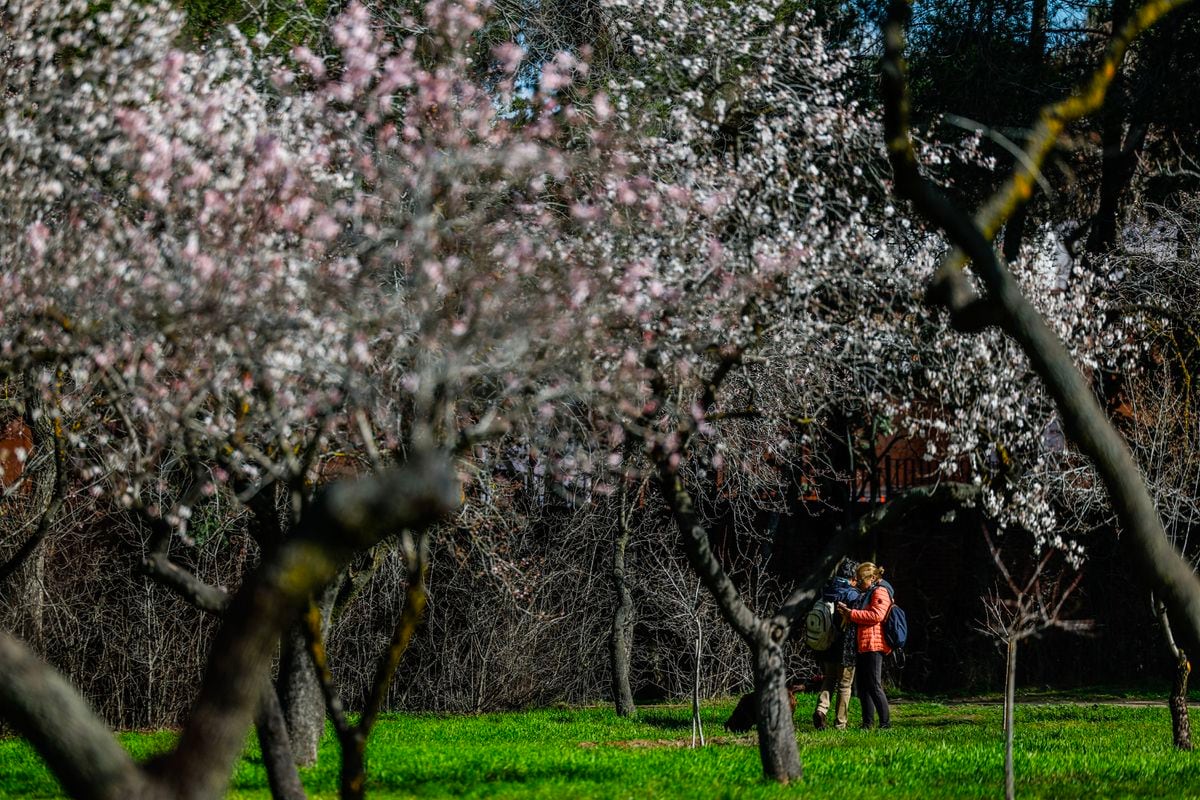The birds sing early, the short sleeves take to the streets at the wrong time and the sneezes come weeks in advance.
The hottest January in history, and in general the high temperatures caused by climate change, are modifying the pollination dates of trees and plants.
Some allergies are coming forward and higher peaks have been seen in recent years.
Cypress pollination has occurred weeks earlier than usual, practically a month in some cities.
Madrid, Seville, Toledo, Córdoba, Granada and Bilbao are the ones that have suffered the most, according to the website polenes.com, a tool from the Spanish Society of Allergology and Clinical Immunology (SEAIC) that provides information on more than fifty stations. pollen meters distributed throughout all the provinces.
In Córdoba, for example, 1,195 grains of pollen of this species per cubic meter were recorded a week ago, when the normal for the season is that it does not exceed 50. They are beginning to be considered high above 100. “The peak normally reaches end of February or beginning of March and in January we have already passed very high levels that catch the population off guard,” says Juan José Zapata, president of the clinical aerobiology committee of the SEAIC.
The doctor explains that allergy treatments are more effective the less inflamed the mucosa is due to pollens.
That is, it is advisable to start them with very few symptoms, or even before they occur, because once the runny nose and itching are intense, the medications are no longer as effective.
More information
An immunological key discovered that perpetuates allergies
Antihistamines, which are the drugs usually used, are not intended to cure allergies, something that vaccines achieve to some extent, and which have to be taken steadily over time (generally for two years) or in annual injections. as far in advance of the season as possible.
What medications do is alleviate the symptoms: the immune system reacts to pollen as if it were a dangerous agent and releases histamine, the substance that produces the characteristic discomfort of allergy (sneezing, coughing, itching...) and which is attenuated with this type of drugs.
Zapata recommends being attentive to the pollen levels that cause each person's allergy so, when you see an upward trend, start medication.
“For that, it is very important to be correctly diagnosed,” he clarifies.
But this advance of allergies makes this anticipation difficult, since allergy sufferers, who usually have identified the dates on which they suffer the symptoms, do not expect it, they even take a while to relate them to the illness itself, so they often start treatment late.
High temperatures are also causing higher peaks, which produces more acute allergy episodes.
“In other years, plateaus of 200-300 grains per cubic meter were maintained over time, which are more bearable with treatment.
But we are seeing much higher levels than those, shorter, but also more deteriorating for patients,” adds the doctor.
Pollen allergies usually remain relatively mild symptoms, but very annoying for those who suffer from them, especially if they do not have the appropriate diagnosis and treatment for their case.
However, sometimes the levels of rhinitis, even asthma, can lead to disability and sick leave.
Cherry blossoms in the Quinta de los Molinos park in Madrid, on Monday.
Alvaro Garcia
In addition to the advancement of the cypress, José Quevedo Teruel, from the Clinical Society of Clinical Immunology, Allergology and Pediatric Asthma (SEICAP), adds that the levels of arizónicas have remained very high, which are plants that pollinate normally at this time.
The lack of rain allows particles to remain in the atmosphere longer, and this is combined with pollution, which aggravates respiratory episodes, according to several studies.
In general, any pollutants that remain in the air, including tobacco, help irritate inflammation and the airways, according to the doctor.
“Both in consultation and in the emergency room we are seeing patients with asthma and rhinitis who are worse,” says Quevedo Teruel, who works at the Severo Ochoa Hospital in Madrid.
The Department of Health of the Community of Madrid recognizes that in the first weeks of the year a growing trend has been observed in the number of episodes of allergic rhinitis treated, although those of asthma that have arrived at the emergency room are "within what was expected."
Peak allergy season
It remains to be seen how the peak allergy season will behave in spring.
Everything will depend on temperatures and precipitation.
When they behave abnormally, they alter the expected pollen levels.
“If a sudden drop in temperatures or a few days of intense rain occurs at a time when the plant was beginning to flower according to its characteristic seasonality, flowering can be stopped and slowed down.
And on the contrary, a sudden rise in temperatures could bring forward the start of flowering,” explains Sanidad.
For example, last year, grasses came forward in late March and early April.
They peaked very high and descended sharply.
But the June rains revitalized them and they had a second pollination, so there was a double peak.
As Teruel explains, climate change does not uniquely affect allergies.
Depending on the behavior of the weather, there may be some that are earlier, others that are older and it may also have an impact on lower levels of pollinosis.
“With the lack of rain, there are fewer plants, which will also predictably have less pollen,” she says.
Every March, the SEAIC makes a forecast of how it expects the season to behave with forecasts for grasses, which are, in Zapata's words, “the warning light” of what is to come.
They prepared a statistical study with data since 1995 that correlates pollen levels with temperatures, humidity, precipitation... But the doctor recognizes that climate changes have them "quite confused."
“The more the weather changes, the harder it is to get it right,” he assumes.
Subscribe to continue reading
Read without limits
Keep reading
I am already a subscriber
_

